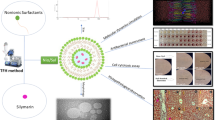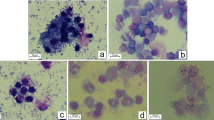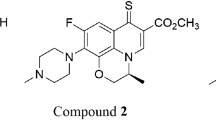Abstract
Hypericin is a photosensitizer compound used in the photodynamic therapy (PDT). PDT is an alternative cancer treatment strategy whose function is dependent on the photosensitizers accumulating selectively in tumor cells and following visible or infra-red light induced activation lead to the apoptosis/necrosis of the tumor cells via the formation of reactive oxygen species. Thus, the cellular redox balance is essential for the efficacy of PDT. Among the protective enzyme systems glutathione S-transferases (GST, E.C.2.5.1.18) function in detoxification, protection against oxidative stress and intracellular transport of molecules. It is known that isoenzymes of GST and especially GST-pi is increased in cancer cells and it plays very important functions in the development of resistance to anticancer drugs. Since photosensitizers are used intravenously, it is important to elucidate the effects of photosensitizers on the erythrocyte enzymes. The aim of the present study was to investigate the impact of hypericin on human erythrocyte GST-pi (heGST-pi). Purification yield of 71 % and purification fold of 2550 were achieved by using conventional chromatographic methods. The specific activity of the enzyme is found as 51 U/mg protein. Hypericin inhibited heGST-pi in a dose dependent manner and inhibition was biphasic. Noncompetitive type of inhibition was observed with both substrates, GSH and CDNB. The inhibitory constant (K i ) values obtained from Lineweaver–Burk, Dixon, secondary plots; slope and y-intercept versus 1/S (substrate) and from non-linear regression analysis were in good correlation: K i (GSH) was calculated as 0.19 ± 0.01 μM and K i (CDNB) as 0.26 ± 0.03 μM.







Similar content being viewed by others
Abbreviations
- CDNB:
-
1-Chloro-2,4-dinitrobenzene
- CYP:
-
Cytochrome P450
- EA:
-
Ethacrynic acid
- ECL:
-
Enhanced chemilluminescence
- EDTA:
-
Ethylenediaminetetraacetic acid
- GSH:
-
Reduced glutathione
- GST:
-
Glutathione S-transferase
- heGST-pi:
-
Human erythrocyte GST-pi
- K i :
-
Inhibitory constant
- K m :
-
Michaelis constant
- PB74:
-
Polybuffer 74
- PBE-94:
-
Polybuffer exchanger 94
- PDT:
-
Photodynamic therapy
- PVDF:
-
Polyvinyl difluoride
- RBC:
-
Red blood cells
- ROS:
-
Reactive oxygen species
- SDS-PAGE:
-
Sodium dodecyl sulfate polyacrylamide gel electrophoresis
- V m :
-
Maximum velocity
References
Karioti A, Bilia AR (2010) Hypericins as potential leads for new therapeutics. Int J Mol Sci 11(2):562–594
Kubin A, Wierrani F, Burner U, Alth G, Grünberger W (2005) Hypericin the facts about a controversial agent. Curr Pharm Des 11(2):233–253
Colasanti A, Kisslinger A, Liuzzi R, Quarto M, Riccio P, Roberti G, Tramontano D, Villani F (2000) Hypericin photosensitization of tumor and metastatic cell lines of human prostate. J Photochem Photobiol B: Biol 54(2):103–107
Castano AP, Demidova TN, Hamblin MR (2005) Mechanisms in photodynamic therapy: part three-photosensitizer pharmacokinetics, biodistribution, tumor localization and modes of tumor destruction. Photodiagnosis Photodyn Ther 2:91–106
Lu WD, Atkins WM (2004) A novel antioxidant role for ligandin behavior of glutathione S-transferases: attenuation of the photodynamic effects of hypericin. Biochemistry 43(40):12761–12769
Halder M, Chowdhury PK, Das R, Mukherjee P, Atkins WM, Petrich JW (2005) Interaction of glutathione S-transferase with hypericin: a photophysical study. J Phys Chem B 109(41):19484–19489
Dabrowski MJ, Daeda M, Zebala J, Lu WD, Mahajan S, Kavanagh TJ, Atkins WM (2006) Glutathione S transferase P1-1 expression modulates sensitivity of human kidney 283 cells to photodynamic therapy with hypericin. Arch Biochem Biophys 449(1):94–103
Tuna G, Kulaksız-Erkmen G, Dalmizrak O, Dogan A, Ogus IH, Ozer N (2010) Inhibition characteristics of hypericin on rat small intestine glutathione-S-transferases. Chem Biol Interact 188(1):59–65
Dalmızrak O, Kulaksız-Erkmen G, Ozer N (2012) Evaluation of the inhibitory impact of hypericin on placental glutathione S-transferase pi. Protein J 31(7):544–549
Armstrong RN (1997) Structure, catalytic mechanism, and evolution of the glutathione transferases. Chem Res Toxicol 10(1):2–18
Hayes JD, Flanagan JU, Jowsey IR (2005) Glutathione transferases. Annu Rev Pharmacol Toxicol 45:51–88
Laborde E (2010) Glutathione transferases mediators of signaling pathways involved in cell proliferation and cell death. Cell Death Differ 17:1373–1380
Ralat LA, Colman RF (2004) Glutathione S-transferase Pi has at least three distinguishable xenobiotic substrate sites close to its glutathione-binding site. J Biol Chem 279(48):50204–50213
Mannervik B, Board PG, Hayes JD, Listowsky I, Pearson WR (2005) Nomenclature for mammalian soluble glutathione transferases. Methods Enzymol 401:1–8
Aliya S, Reddana P, Thyagaraju K (2003) Does glutathione S-transferase pi (GST-pi) a marker protein for cancer? Mol Cell Biochem 253:319–327
Noguti J, Barbisan LF, Cesar A, Seabra CD, Choueri RB, Ribeiro DA (2012) In vivo models for measuring placental glutatione-S-transferase (GST-P 7-7) levels: a suitable biomarker for understanding cancer pathogenesis. Vivo 26(4):647–650
Coles BF, Kadlubar FF (2005) Human alpha class glutathione-S-transferase: genetic polymorphism, expression, and suscepitibility to disease. Methods Enzymol 401:9–42
Ha YS, Yan C, Jeong P, Kim WT, Yun SJ, Kim IY, Moon SK, Kim WJ (2011) GSTM1 tissue genotype as a recurrence predictor in non-muscle invasive bladder cancer. J Korean Med Sci 26(2):231–236
Gobbi M, Moia M, Pirona L, Morizzoni P, Mennini T (2001) In vitro binding studies with two hypericum perforatum extracts—hyperforin, hypericin and biapigenin-on 5-HT6, 5-HT7, GABA(A)/benzodiazepine, sigma, NPY-Y1/Y2 receptors and dopamine transporters. Pharmacopsychiatry 34(Suppl 1):45–48
Suzuki O, Katsumata Y, Oya M, Bladt S, Wagner H (1984) Inhibition of monoamine oxidase by hypericin. Planta Med 50:272–274
Habig WH, Jakoby WB (1981) Assays for differentiation of glutathione S-transferases. Methods Enzymol 77:398–405
Bradford MM (1976) A rapid and sensitive method for the quantitation of microgram quantities of protein utilizing the principle protein-dye binding. Anal Biochem 72:248–254
Laemmli UK (1970) Cleavage of structural proteins during the assembly of the head of bacteriophage T4. Nature 227:680–685
Segel IH (1976) Biochemical calculations. Wiley, New York
Burnette WN (2011) Western blotting. Clin Chem 57(1):132–133
Segel IR (1975) Enzyme kinetics. Wiley, New York
Marcus CJ, Habig WH, Jakoby WB (1978) Glutathione transferase from human erythrocytes. Nonidentity with the enzymes from liver. Arch Biochem Biophys 188:287–293
Guthenberg C, Mannervik B (1981) Glutathione-stransferase (transferase pi) from human placenta is identical or closely related to glutathione-S-transferase (transferase rho) from erythrocytes. Biochim Biophys Acta 661(2):255–260
Awasthi Y, Singh SV (1984) Purification and characterization of a new form of glutathione-S-transferase from human erythrocytes. Biochem Biophys Res Commun 125(3):1053–1060
Awasthi YC (2007) Toxicology of glutathione transferases. Taylor & Francis, USA
Boccio GD, Casalone E, Paolo S, Pennelli A, Ilio CD (1986) Isoenzyme patterns of glutathione transferases from mammalian erythrocytes. Biochem Med Metab Biol 36:306–312
Howie AF, Hayes JD, Beckett GJ (1988) Purification of acidic glutathione S-transferases from human lung, placenta and erythrocyte and the development of a specific radioimmunoassay for their measurement. Clin Chim Acta 177(1):65–75
Meister A (1988) Glutathione metabolism and its selective modification. J Biol Chem 263(33):17205–17208
Strange RC, Davis BA, Faulder CG, Cotton W, Bain AD, Hopkinson DA, Hume R (1985) The human glutathione S-transferases: developmental aspects of the GST1, GST2, and GST3 loci. Biochem Genet 23(11–12):1011–1028
Thumser AE, Ivanetich KM (1993) Kinetic mechanism of human erythrocyte acidic isoenzyme rho. Biochim Biophys Acta 1203:115–120
Galli F, Rovidati S, Benedetti S, Buoncristiani U, Covarelli C, Floridi A, Canestrari F (1999) Overexpression of erythrocyte glutathione S-transferase in uremia and dialysis. Clin Chem 45(10):1781–1788
Hamed RR, Maharem TM, Abdel-Meguid N, Sabry GM, Abdalla AM, Guneidy RA (2011) Purification and biochemical characterization of glutathione S-transferase from down syndrome and normal children erythrocytes: a comparative study. Res Dev Disabil 32(5):1470–1482
Murray RK, Bender DA, Botham KM, Kennely PJ, Rodwell VW, Weil PA (2009) Harper’s Illustrated Biochemistry. The McGraw-Hill Company, USA
Valko M, Leibfritz D, Moncol J, Cronin MT, Mazur M, Telser J (2007) Free radicals and antioxidants in normal physiological functions and human disease. Int J Biochem Cell Biol 39(1):44–84
Martirosyan AS, Vardapetyan HR, Tiratsuyan SG, Hovhannisyan AA (2011) Biphasic dose-response of antioxidants in hypericin-induced photohemolysis. Photodiagnosis Photodyn Ther 8(3):282–287
Fingar VH (1996) Vascular effects of photodynamic therapy. J Clin Laser Med Surg 14:323–328
Racinet H, Jardon P, Gautron R (1988) Generation of singlet oxygen 1-delta-g photosensitized by hypericin, Kinetic study in non ionic micellar medium. J Chim Phys Phys-Chim Biol 85(10):971–977
Acknowledgments
We gratefully thank to Dr. Yasemin Aksoy and Dr. Yaman Muşdal for their support to carry out Western blotting experiments. We also thank to Dr. Umut Gazi for language editing of the manuscript. This work was supported by Hacettepe University Scientific Research Council (HUBAB-011D04101002).
Author information
Authors and Affiliations
Corresponding author
Ethics declarations
Conflict of interest
The authors declare no conflict of interest.
Rights and permissions
About this article
Cite this article
Turk, S., Kulaksiz Erkmen, G., Dalmizrak, O. et al. Purification of Glutathione S-Transferase pi from Erythrocytes and Evaluation of the Inhibitory Effect of Hypericin. Protein J 34, 434–443 (2015). https://doi.org/10.1007/s10930-015-9638-6
Published:
Issue Date:
DOI: https://doi.org/10.1007/s10930-015-9638-6




